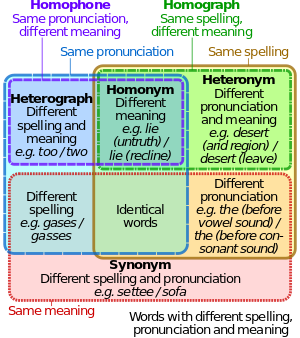0
METONYMY
Posted by Pomegranate's
on
01.37
Metonymies are frequently used in literature and in everyday speech. A metonymy
is a word or phrase that is used to stand in for another word.
Sometimes a metonymy is chosen because it is a well-known characteristic
of the word.
One famous example of metonymy is the saying, "The pen is mightier than the sword," which originally came from Edward Bulwer Lytton's play Richelieu. This sentence has two examples of metonymy:
Understanding the context of a metonymy is important. For example, the word "pen" is not always standing in for the written word; often, it just refers to the physical object of a pen.
The examples below include both the metonymy and the possible words for which the metonymy would fill in:
Sentences Using a Metonymy
These sentences will further enhance your appreciation and understanding of metonymies. The metonymy is underlined.
Using a metonymy serves a double purpose - it breaks up any awkwardness of repeating the same phrase over and over and it changes the wording to make the sentence more interesting.
Read more at
One famous example of metonymy is the saying, "The pen is mightier than the sword," which originally came from Edward Bulwer Lytton's play Richelieu. This sentence has two examples of metonymy:
- The "pen" stands in for "the written word."
- The "sword" stands in for "military aggression and force."
Metonymy: Stand-Ins for Other Words
A Word Functioning as a MetonymyUnderstanding the context of a metonymy is important. For example, the word "pen" is not always standing in for the written word; often, it just refers to the physical object of a pen.
The examples below include both the metonymy and the possible words for which the metonymy would fill in:
- Crown - in place of a royal person
- The White House - in place of the President or others who work there
- The suits - in place of business people
- Dish - for an entire plate of food
- Cup - for a mug
- The Pentagon - to refer to the staff
Sentences Using a Metonymy
These sentences will further enhance your appreciation and understanding of metonymies. The metonymy is underlined.
- We must wait to hear from the crown until we make any further decisions.
- The White House will be announcing the decision around noon today.
- If we do not fill out the forms properly, the suits will be after us shortly.
- She's planning to serve the dish early in the evening.
- The cup is quite tasty.
- The Pentagon will be revealing the decision later on in the morning.
Using a metonymy serves a double purpose - it breaks up any awkwardness of repeating the same phrase over and over and it changes the wording to make the sentence more interesting.
Read more at
http://examples.yourdictionary.com/examples-of-metonymy.html#BIDVGjjzK8oZukl2.99












